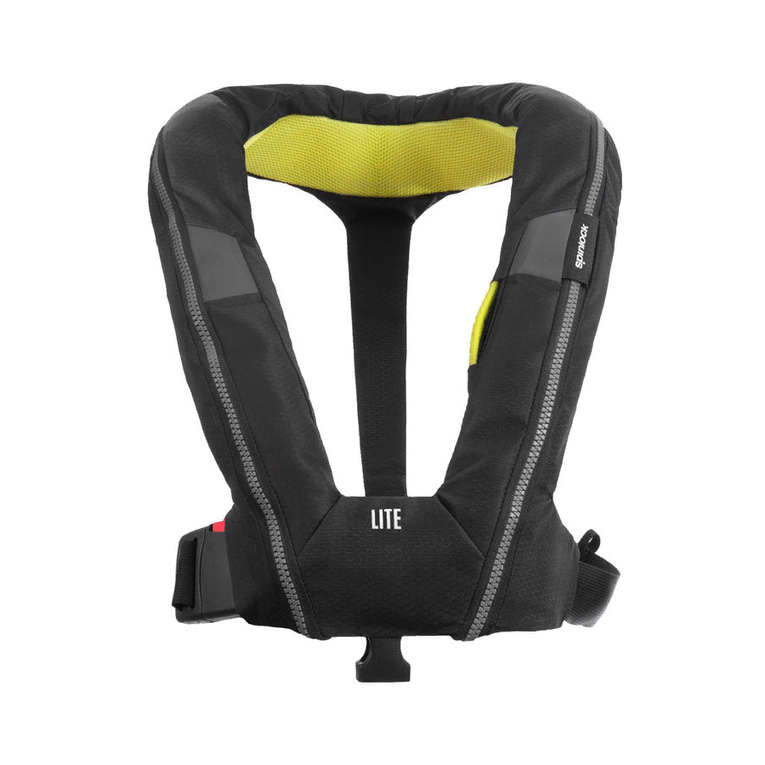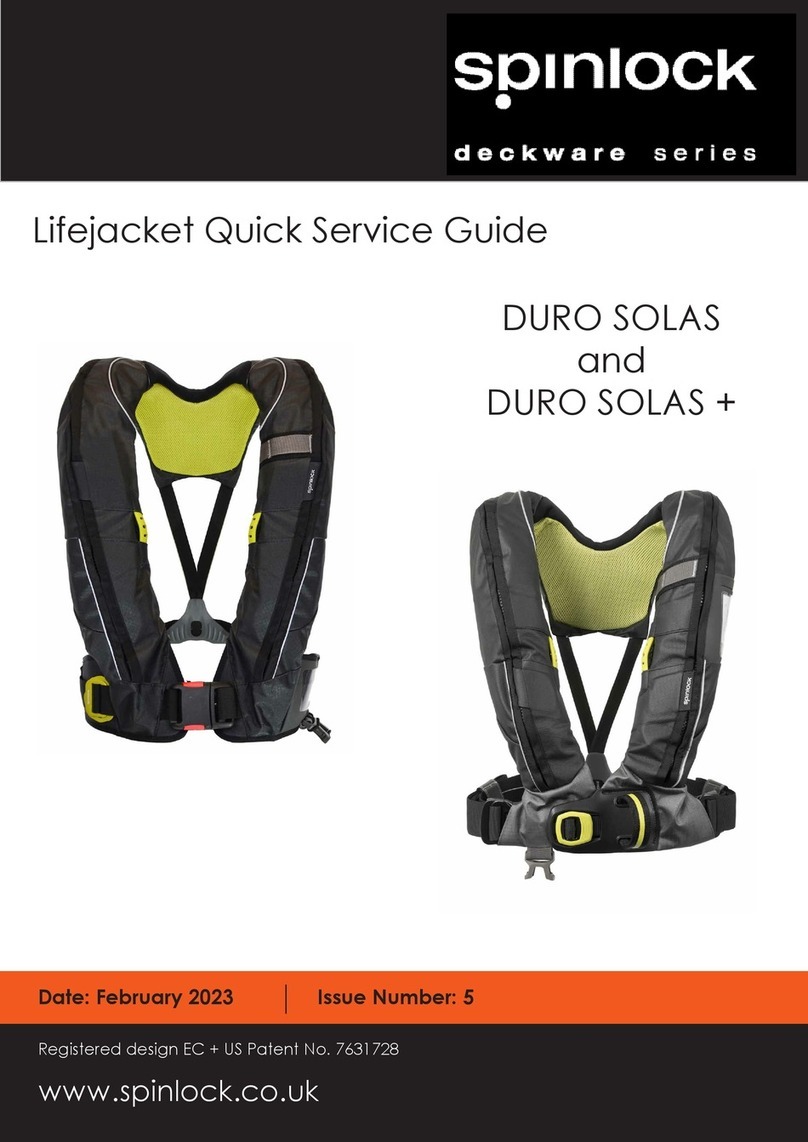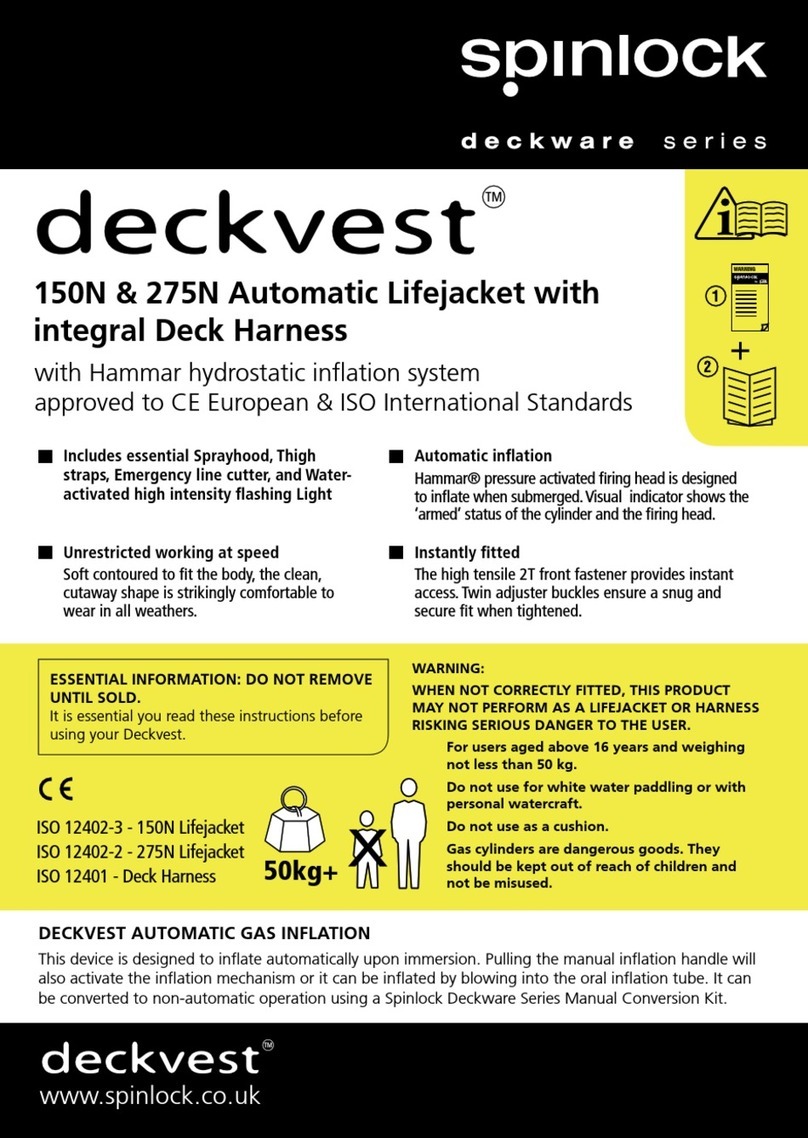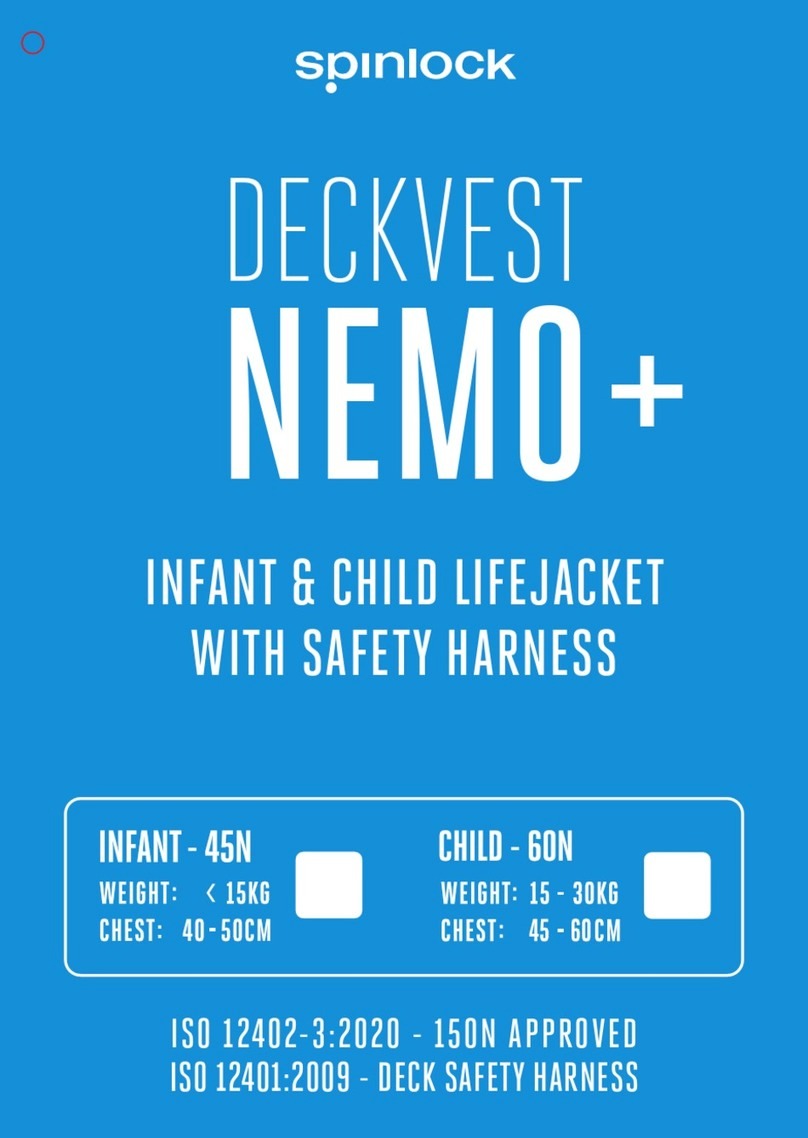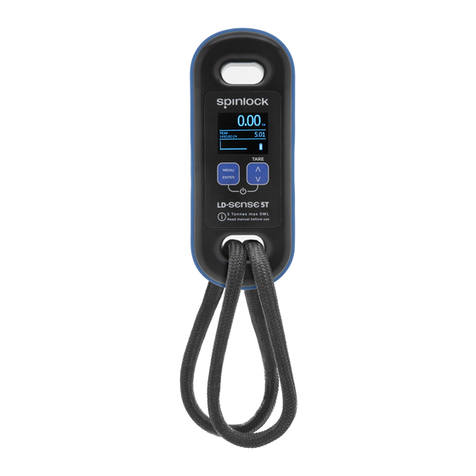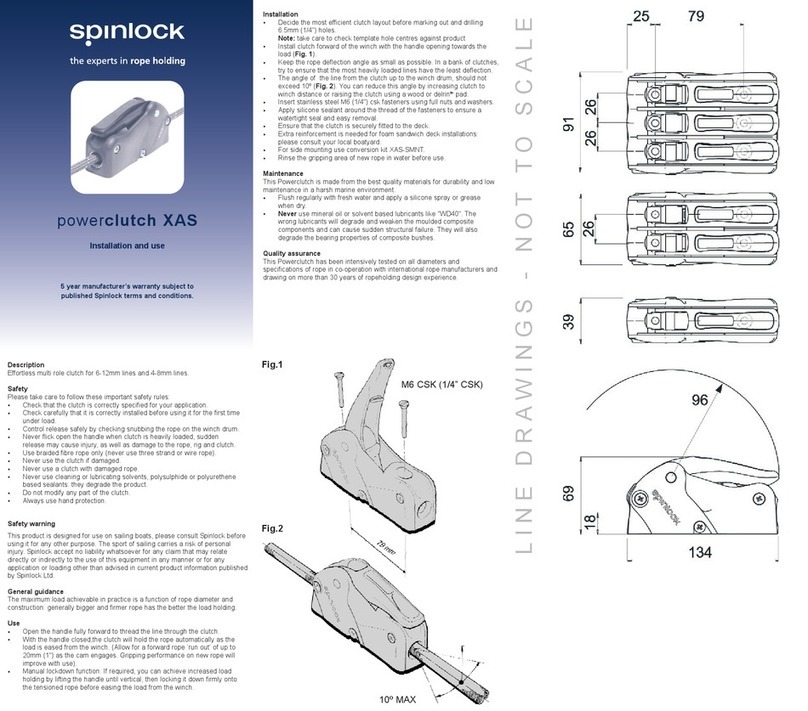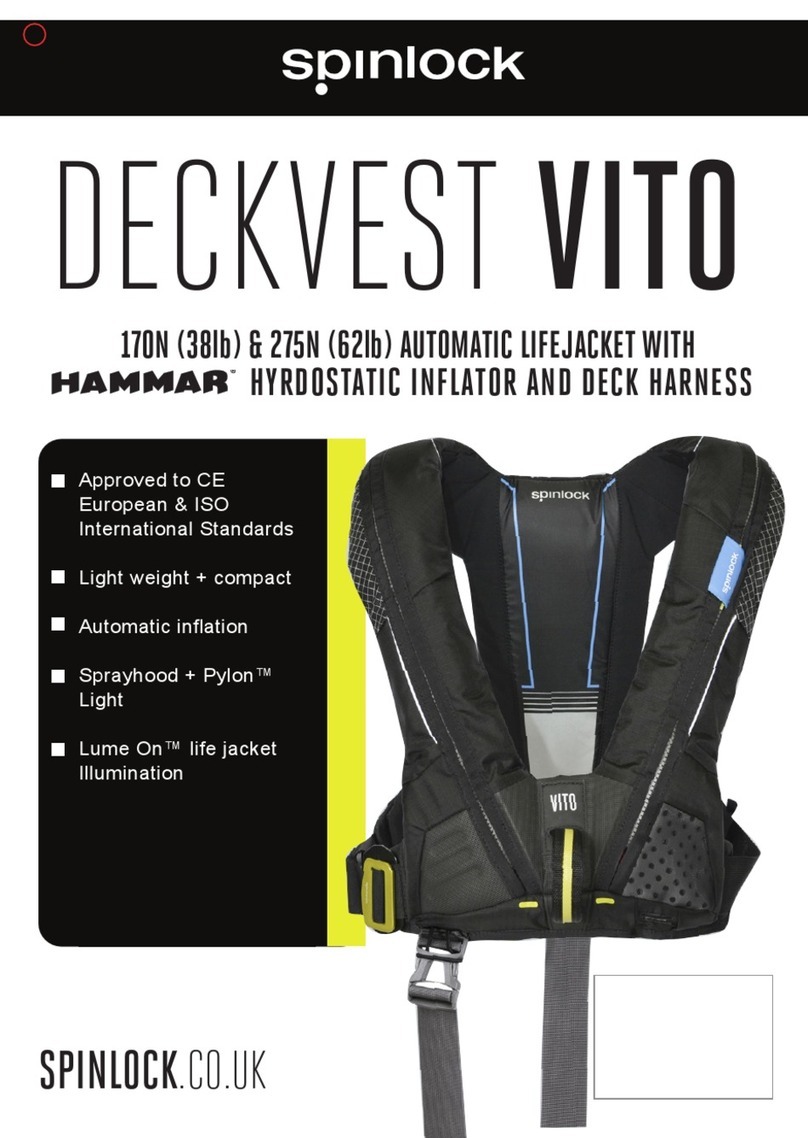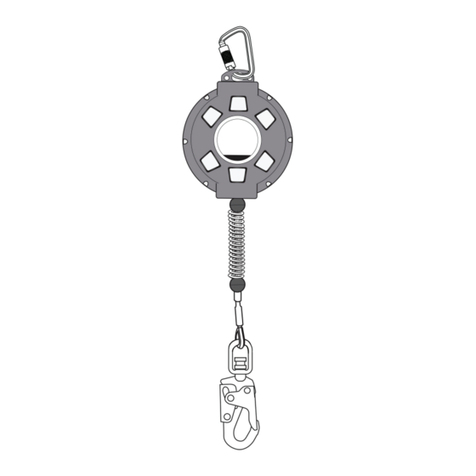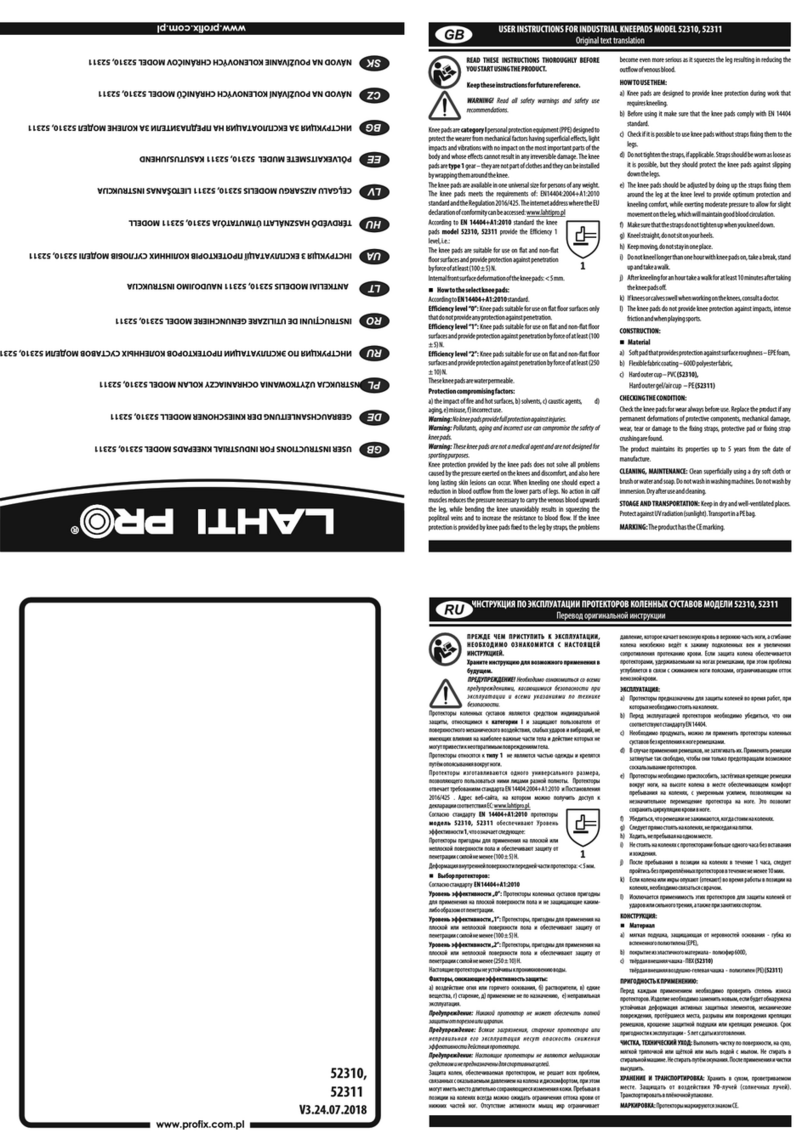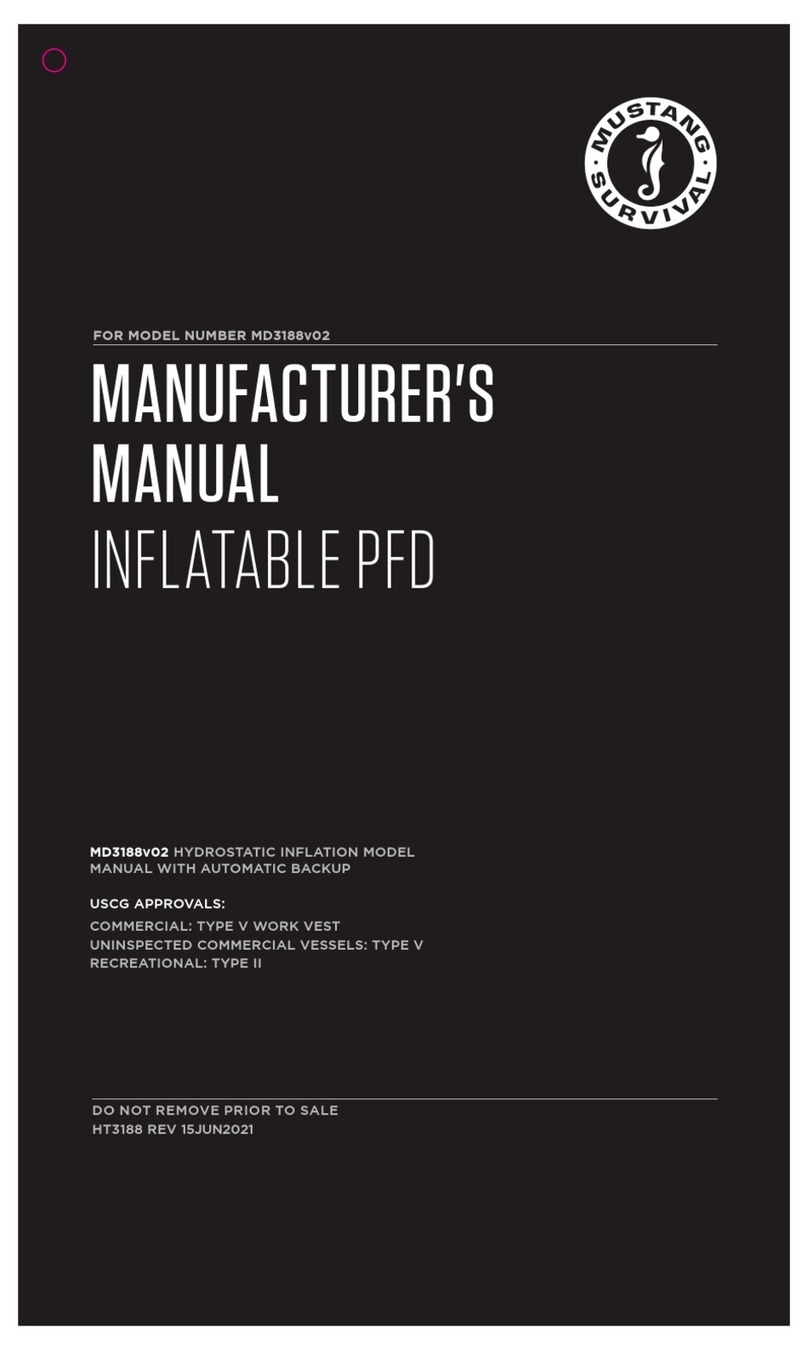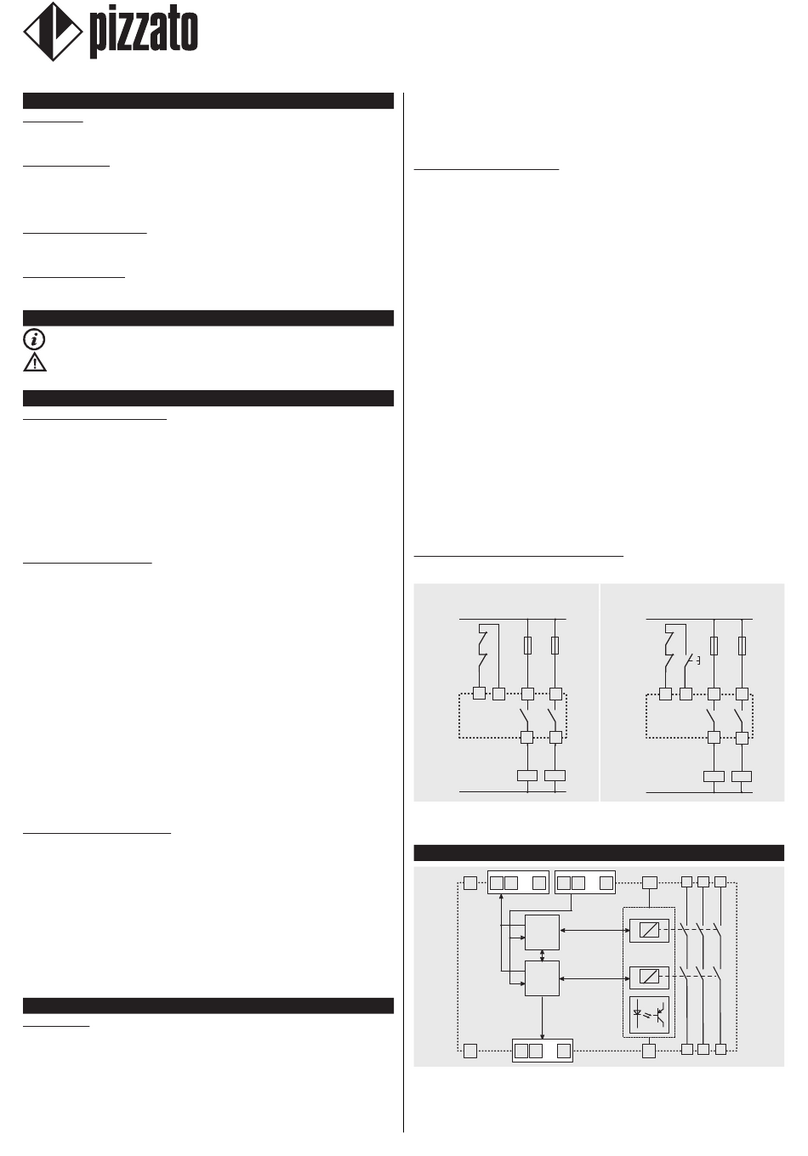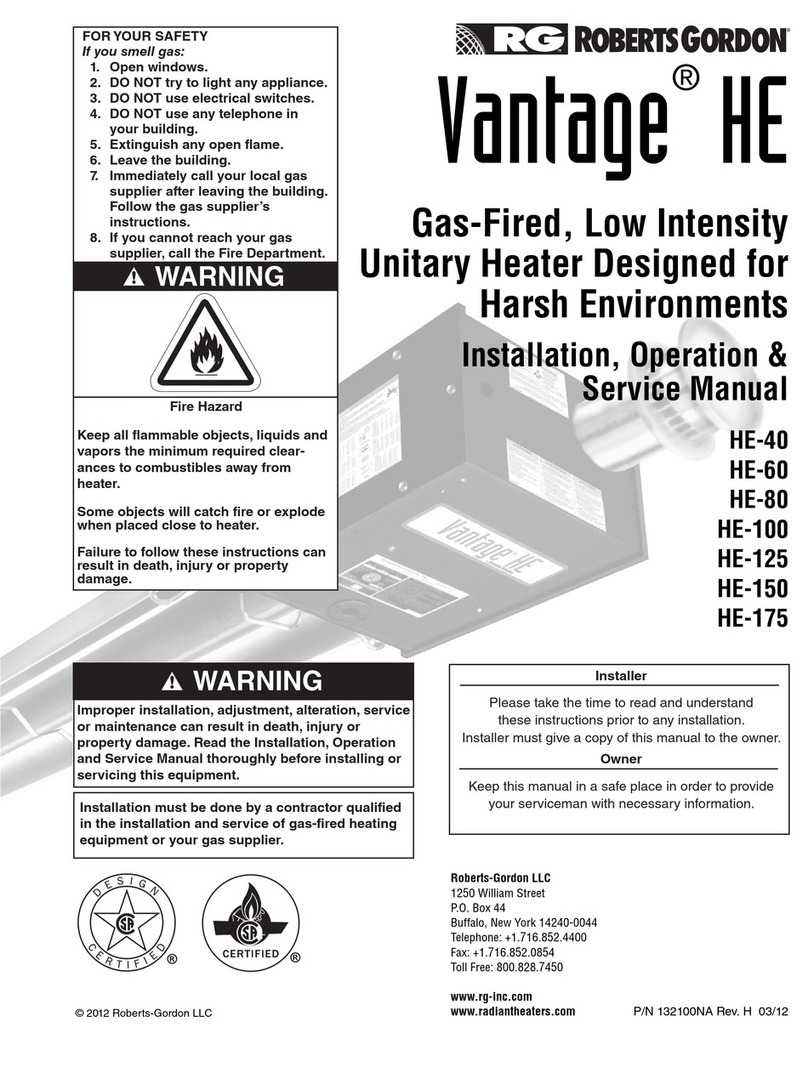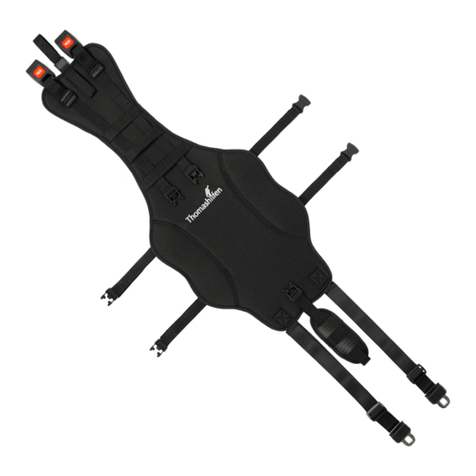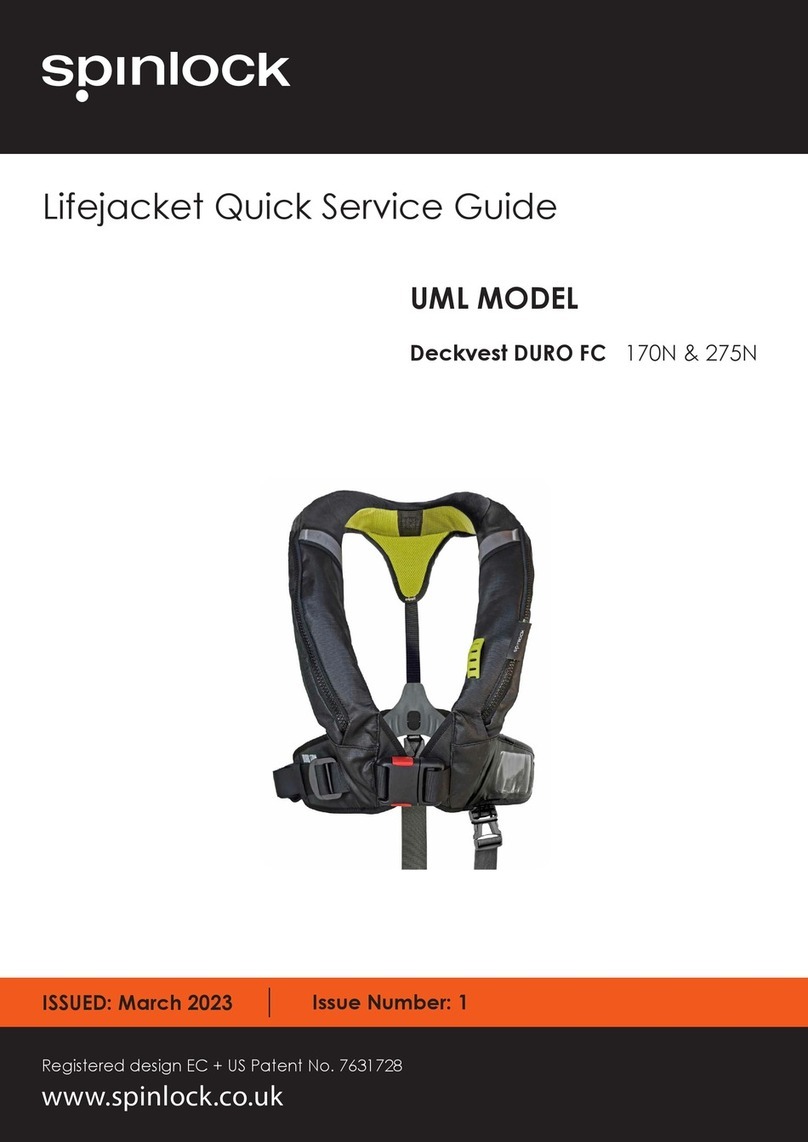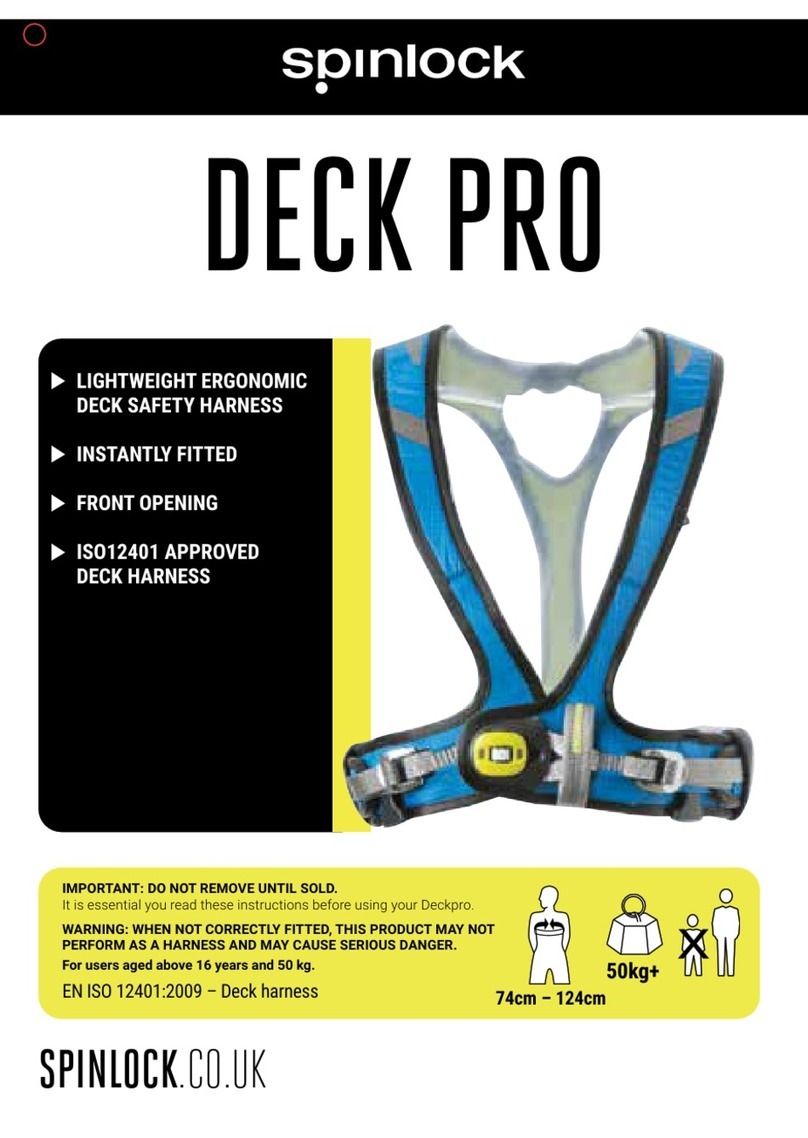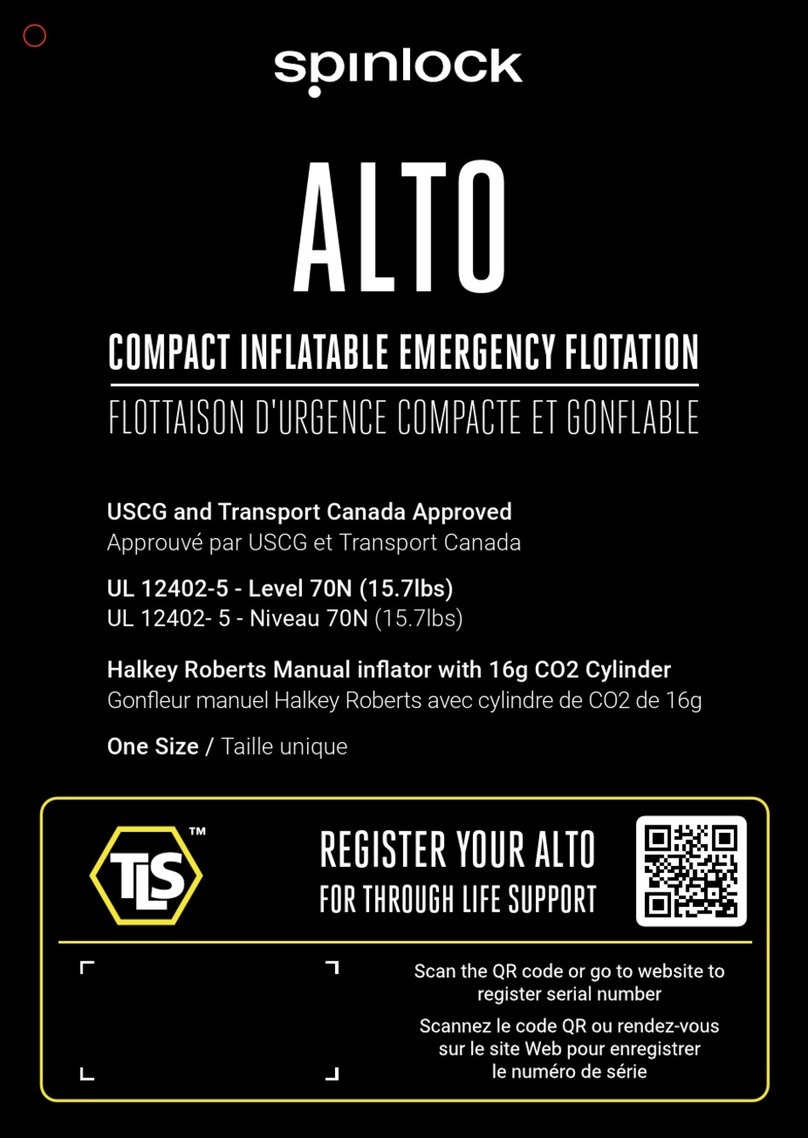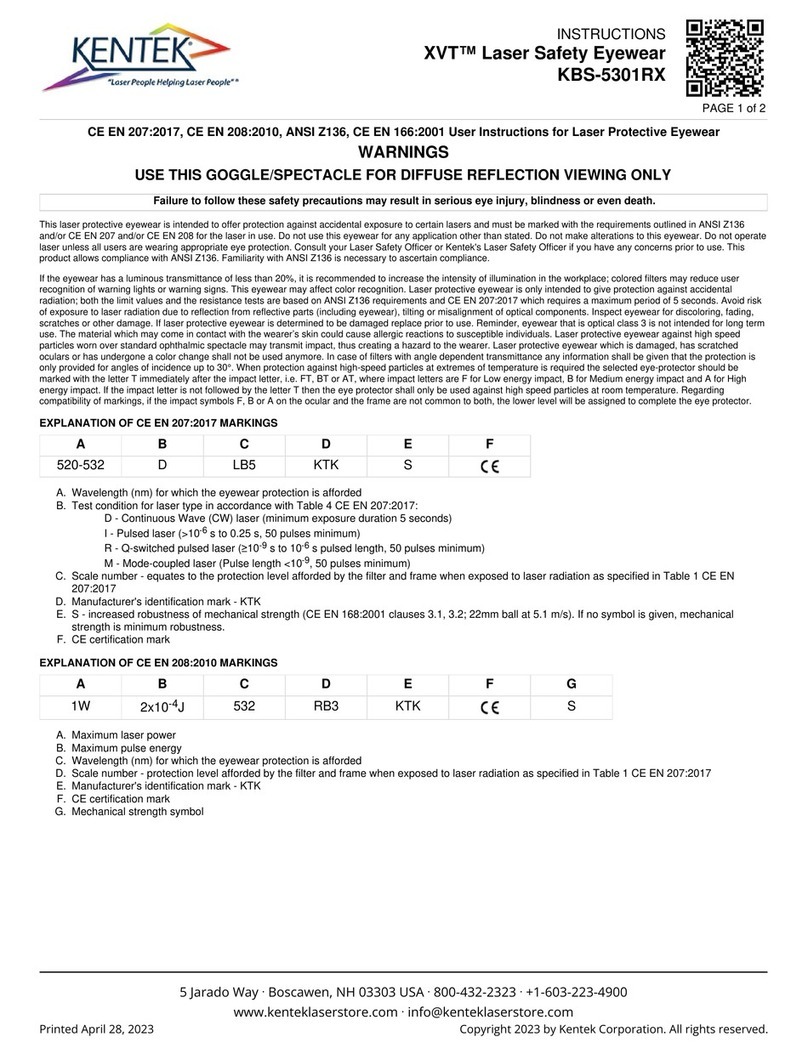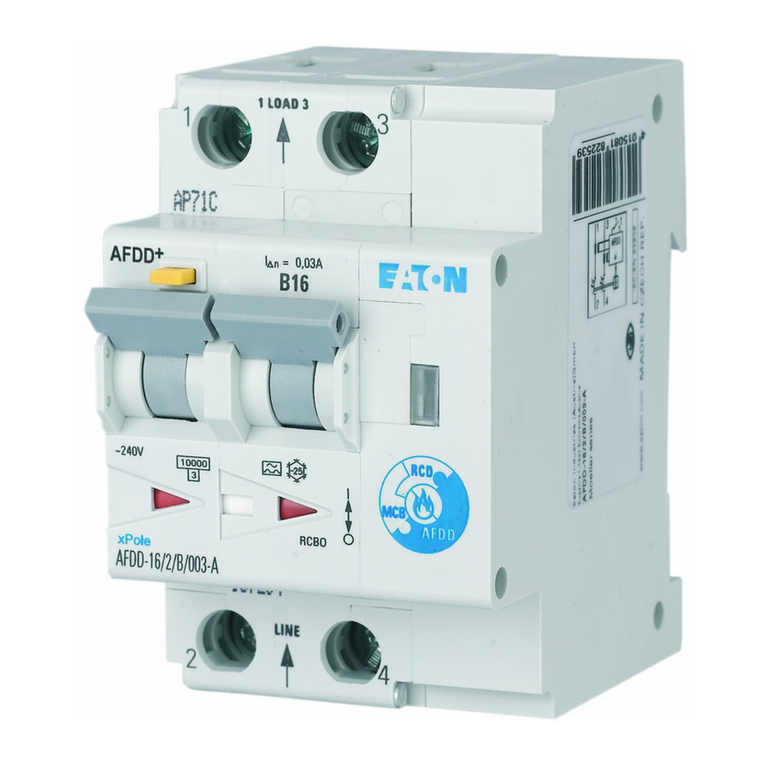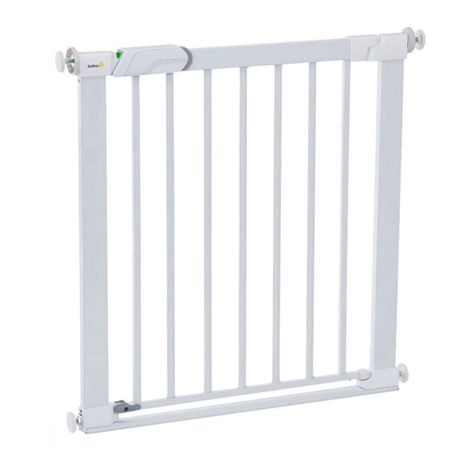1615
(EN) English
Instructions for use
FITTING ADJUSTMENTS (PAGES 3 & 4)
A. Put on as jacket, B. Fasten Button, C. Pull chest
belt tight – it is unsafe to wear this harness loose.
D. Adjust back strap so that chest belt is positioned
above lowest point of rib cage. E. If required attach
thigh straps - pass thigh strap through legs before
fastening plastic buckle on front.
HOW TO USE (PAGES 5 & 6)
A. Anchorage point should be located at the centre of
the chest. Note: safety line is for illustration only.
Ensure no sharp edges on safety line attachment
point. Use with approved safety line only.
Guidance Attach to Jackstays/fixed eyes.
Anchorage points shall be able to withstand
forces of more than 1 tonne. Never attach to
Lifeline/standing and running rigging/going aloft.
GENERAL INFORMATION
Important notice: Specific training is essential
before use
Read this notice carefully before use. This technical
notice illustrates ways of using this product. Only
some types of misuse and forbidden uses currently
known are represented (shown in crossed out
diagrams). Many other types of misuse exist, which
are impossible to list or even imagine. Only the
techniques shown in the diagrams and not crossed
out are authorised. All other uses are expressly
excluded; danger of death. In case of doubt or
problem of understanding, contact Spinlock. Water
sports are dangerous activities which may lead to
severe injuries or even death. Adequate training in
appropriate safety techniques and methods is essential
and acquiring this is your own responsibility. You
personally assume all risks and responsibilities for all
damage, injury or death which may occur during or
following wrong use of our products in any manner
whatsoever. If you are not able, or not in a position to
assume this responsibility or to take risk do not use
this equipment.
USE
This product must only be used by competent and
responsible persons, or those placed under the direct
and visual control of a competent and responsible
person. Check that this product is compatible with
other components of your equipment. To prolong the
life of this product, care in use is necessary. Avoid
rubbing against abrasive surfaces or sharp edges.
The deck safety harness and safety line are intended
to prevent the user falling overboard, they do not
provide protection against falls from height. In a fall
the deck safety harness and safety line may transmit
very large forces to the anchorage point.
Full performance may not be achieved using
waterproof clothing or in other circumstances. Gas
cylinders are dangerous goods and should be kept
away from children and not misused. Do not use as a
cushion. Train yourself in the use of this device.
WARNING: WHEN NOT CORRECTLY FITTED, THIS
DECKVEST MAY NOT PERFORM AS A LIFEJACKET
OR HARNESS AND MAY ENDANGER THE USER.
MAJOR FALLS
In the event that your full bodyweight is dropped a
distance and then stopped, do not continue to use
this product. Even if no external changes visible,
internal damage may have reduced its strength and
its margin of safety. Do not hesitate to contact
Spinlock in case of doubt.
CLEANING, MAINTENANCE, STORAGE
Remove gas cylinder and automatic components and
clean by hand or in a machine set for delicate
material wash and rinse in clean water (maximum
temperature 30° C). Dry in a cool, ventilated dark
room. Grease spots may be removed with
trichlorethylene. Webbing shrinks very slightly in
drying. Always carry and store your Deckvest in its
bag. Though UV protected, this product is best
stored away from direct light, in a well ventilated
place away from extreme temperatures.
CHEMICALS
All chemicals, (including petrol, battery acid),
corrosive materials and solvents should be regarded
as harmful. If your Deckvest comes in contact with
chemicals, please notify us, stating the precise
chemicals concerned. We will investigate and give
our advice.
LIFETIME = SHELF LIFE + USEFUL LIFE
After first use this product should last 3 years.
Certain environmental elements will considerably
accelerate wear: salt, sand, moisture, chemicals.
In exceptional circumstances, wear or damage
could occur on the first use which reduces the
lifetime of the product to that one single use.
However wear or damage could shorten the
product life. Shelf-life of this product in good
condition is up to 5 years before first use.
TEMPERATURE
Use this product only above a minimum of -40° C
and below a maximum of +80° C.
DISINFECTING THE PRODUCT
When necessary, use a disinfectant that is
compatible with polyamide, polyester,
polycarbonate, PVC etc. Use diluted with clean
water at a maximum temperature of 30° C. After
soaking for an hour, rinse in clean cold water. Dry
slowly, away from direct heat.
RESPONSIBILITY
Spinlock is not responsible for the consequences,
direct, indirect or accidental, or any type of damage
befalling or resulting from the use of its products.
2 YEAR GUARANTEE
This product is guaranteed for 2 years from the date
of manufacture against any faults in materials or
manufacture. Exclusions from the guarantee are:
normal wear and tear, modifications or alterations,
incorrect storage, damage due to accident,
negligence and any use for which the product was
not designed.
Certain environmental elements will considerably
accelerate wear: salt, sand, moisture, chemicals. In
exceptional circumstances, wear or damage could
occur on the first use which reduces the lifetime of
the product to that one single use.










